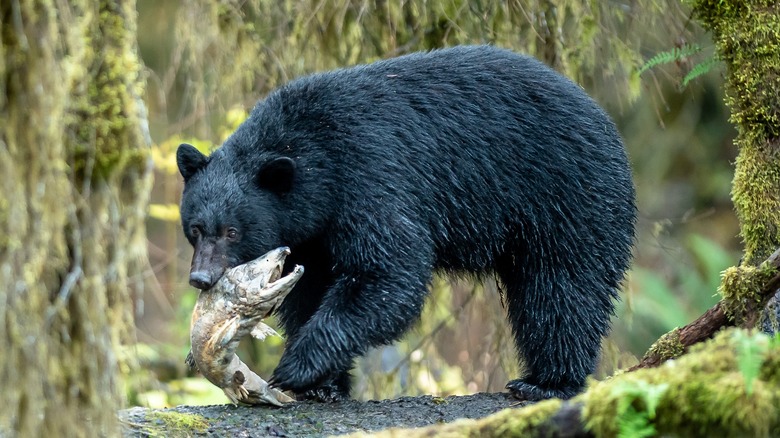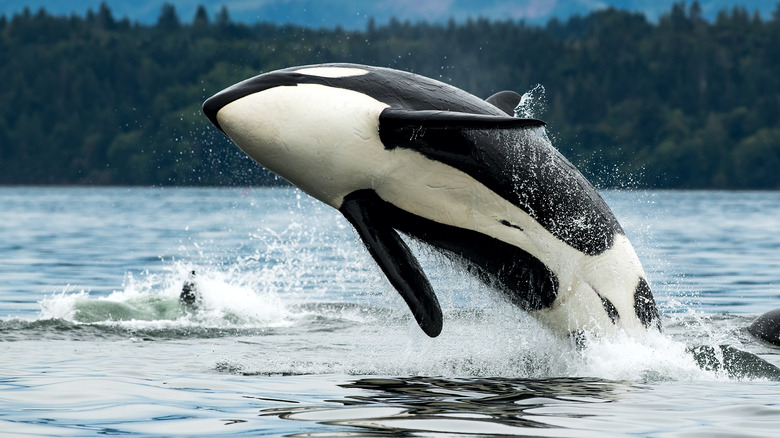Marine wildlife on Vancouver Island
The ocean around Vancouver Island is home to many marine mammals, the most abundant being harbour seals, which were nicknamed “ocean puppies” by the Oregon Zoo for their dog-like faces and cute antics in the water. On the opposite end of the spectrum are fierce orcas that are also prevalent around the island. Referred to as killer whales because of their powerful predatory nature, they are actually the largest members of the dolphin family. With 80 resident orcas living near the southern coast of Vancouver Island, and another 260 near the north coast, the animals are frequently spotted on whale-watching trips departing from both the south and north sides of the island.
Several species of whales also frequent the waters around the island, depending on the season. For the thrill of watching enormous humpback whales breach and spout, plan your visit to the island during the summer and early fall during their annual feeding and breeding season. In addition, over 20,000 Pacific gray whales can be observed near the island from late February through April as they head north to their summer feeding grounds. During their migration — which is the longest of any mammal — gray whales travel in small groups and can be quite affectionate with one another. Minke whales are smaller, usually solitary, and more difficult to spot. But lucky whale watchers sometimes see them around the island between May and October.
No lions and tigers but plenty of bears

Running into a bear in the wild is an unforgettable — and potentially terrifying — experience. But it just might happen to you on Vancouver Island, which is home to about 7,000 black bears. The island’s black bear density is one of the highest in the world. If you do encounter a black bear while trekking around the island, watch from a safe and respectful distance and walk away slowly if you need to vacate the area.
A less stressful way to see black bears is on a guided tour that takes you to some of their common foraging areas. Pacific Rim National Park is prime territory for black bears . But tours are available in many locations across the island, including Tofino and Ucluelet on the western side and Telegraph Cove and Port McNeill in the east. On the northwest coast, tours departing from Campbell River — widely known as the “salmon capital of the world” — offer front-row seats to the spectacle of bears feasting on salmon during their annual run up the river. Some boat tours departing from Campbell River venture into fjords around mainland BC. In these areas, you also have the opportunity to view grizzlies, black bears’ larger and more aggressive cousins, along with many other wildlife species. Wildlife tours require silence and patience while waiting for the animals. So by all means, bring your water bottle and binoculars, but it’s best to leave children and chihuahuas safely at home.

